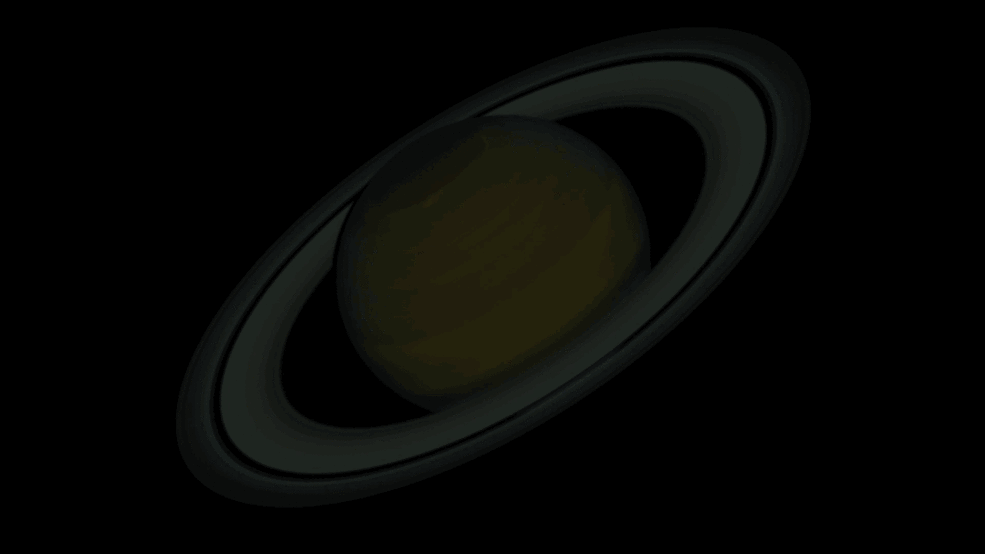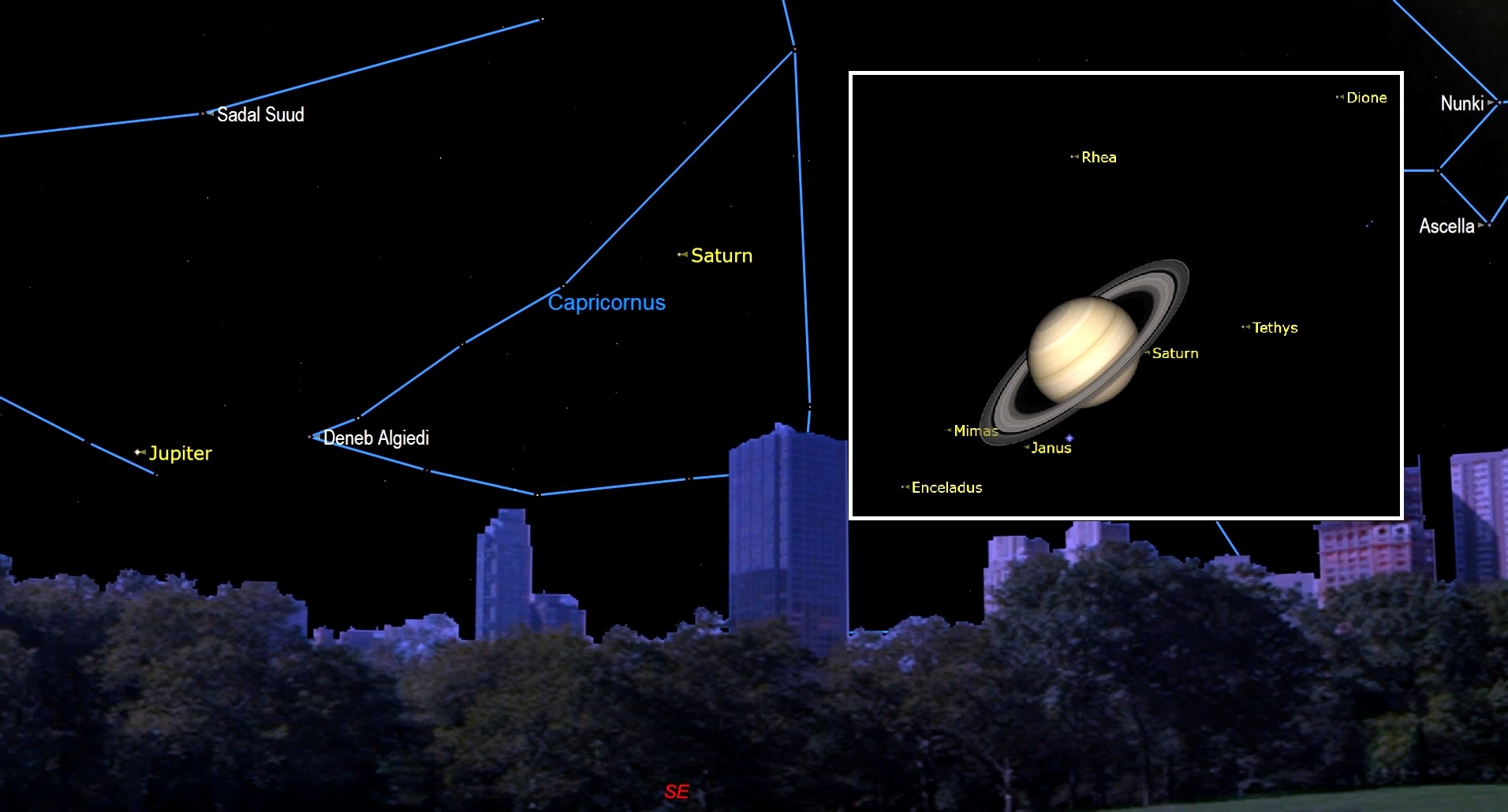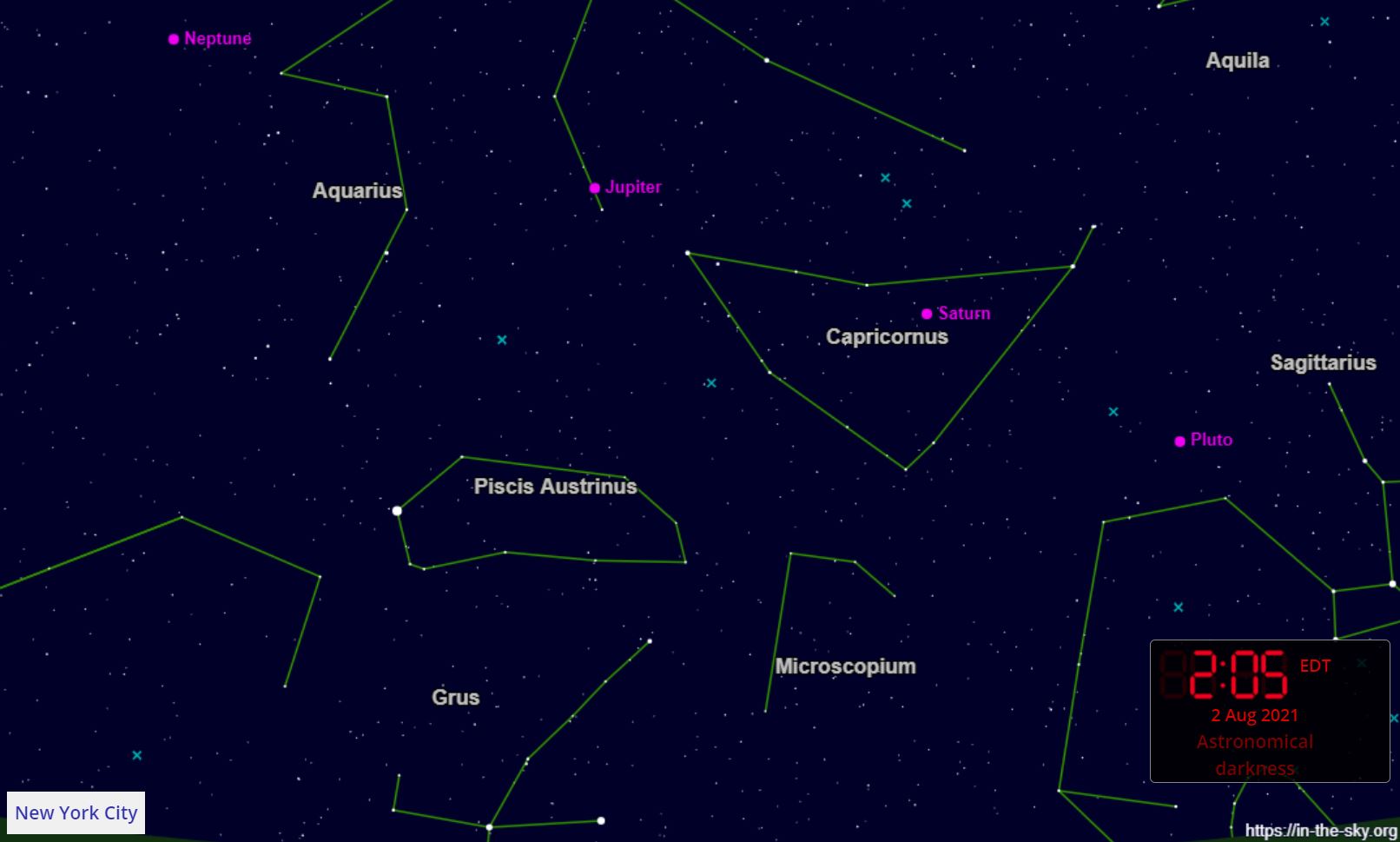How to Make Ring Shine Again
Look upward! Saturn shines bright, shows off rings as it reaches opposition.

Set for Saturn's annual show in the night sky!
Starting Monday (Aug. two), you lot can detect Saturn shining in the heaven equally part of a celestial phenomenon called opposition. Earth and the ringed planet will be on the same side of the sun and continued with our star past an invisible line, allowing skygazers on Earth to meet a fully illuminated Saturn. Saturn reaches this brightest signal at about two a.yard. EDT (0600 GMT) on Monday, co-ordinate to the website EarthSky.org. It volition be highest in the sky around midnight local time and located in the constellation Capricornus.
Skywatchers volition exist able to spot several gems, the most obvious beingness Saturn's rings. This year, Saturn'due south northern hemisphere volition be tilted in our management at a slant that allows for a prissy look at Saturn'southward rings inclined at an bending of 18 degrees with respect to Earth, according to the website In-The-sky.org. The angle should also allow sunlight to reverberate off the icy rings to illuminate them from our perspective.
Related: The brightest planets in Baronial's nighttime heaven: How to run into them (and when)
Read more: Saturn's summer season ends as Hubble telescope watches (photos)

Viewers may too go to see Titan, Saturn's largest moon. "Through a small telescope, Titan is really pretty easy," astronomer Phil Plait told NPR. "If you accept a look, you might see a little star right next to Saturn. That might very well exist Titan — you lot tin can become online and discover planetarium software" to confirm information technology, he said.
Carlos Blanco, a particle physicist at Princeton University and an avid skywatcher, told Infinite.com that he recommends viewing Saturn with a telescope that offers a narrow field of view and high magnification.
"In the sky, planets are unique in that they are relatively bright only about bespeak-like, as opposed to the moon or the Andromeda galaxy, which extend several degrees in the sky," he said.
"So to become a good look at them, you desire to accept a telescopic such that the paradigm you see in the viewfinder is roughly as big as the planet. In other words, the circumvolve that the viewer makes in the sky should exist very tight around that point of light," he said. "Roughly speaking, the higher the magnification power of the telescope, the smaller the field of view, and vice versa."
Blanco recommends an viii-inch Dobsonian telescope; check out Space.com'southward list of this year'southward all-time telescopes for recommendations.

Don't worry if you lot can't locate a telescope in time, because Saturn is one of the most distant objects that people can view in the sky with the naked center. As a full general dominion of thumb, Plait recommends finding the brightest point in the night sky (after Venus has prepare, that is — that planet is easy to recognize because it shines low in the heaven later dusk or before sunrise). That brilliant point is Jupiter, he told NPR, and Saturn will be the side by side-brightest point in the sky, w of Jupiter.
Understanding how opposition works will help, too. Opposition occurs when a planet appears opposite the lord's day in Earth'southward heaven. In this case, Saturn will climb high in the Northern Hemisphere'south sky at night because information technology is opposite the sun, which is high in the sky on the daytime side.
Follow Doris Elin Urrutia on Twitter @salazar_elin. Follow us on Twitter @Spacedotcom and on Facebook.
Source: https://www.livescience.com/saturn-opposition-2021-skywatching
0 Response to "How to Make Ring Shine Again"
Post a Comment